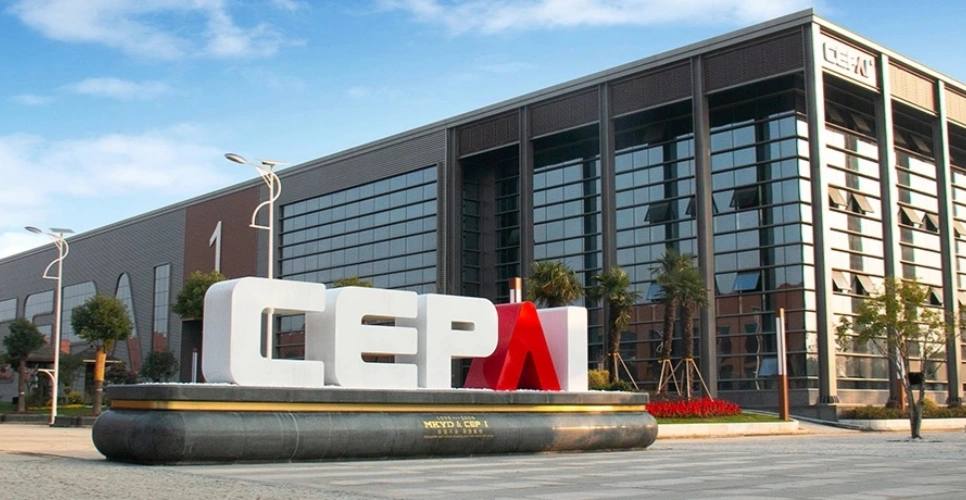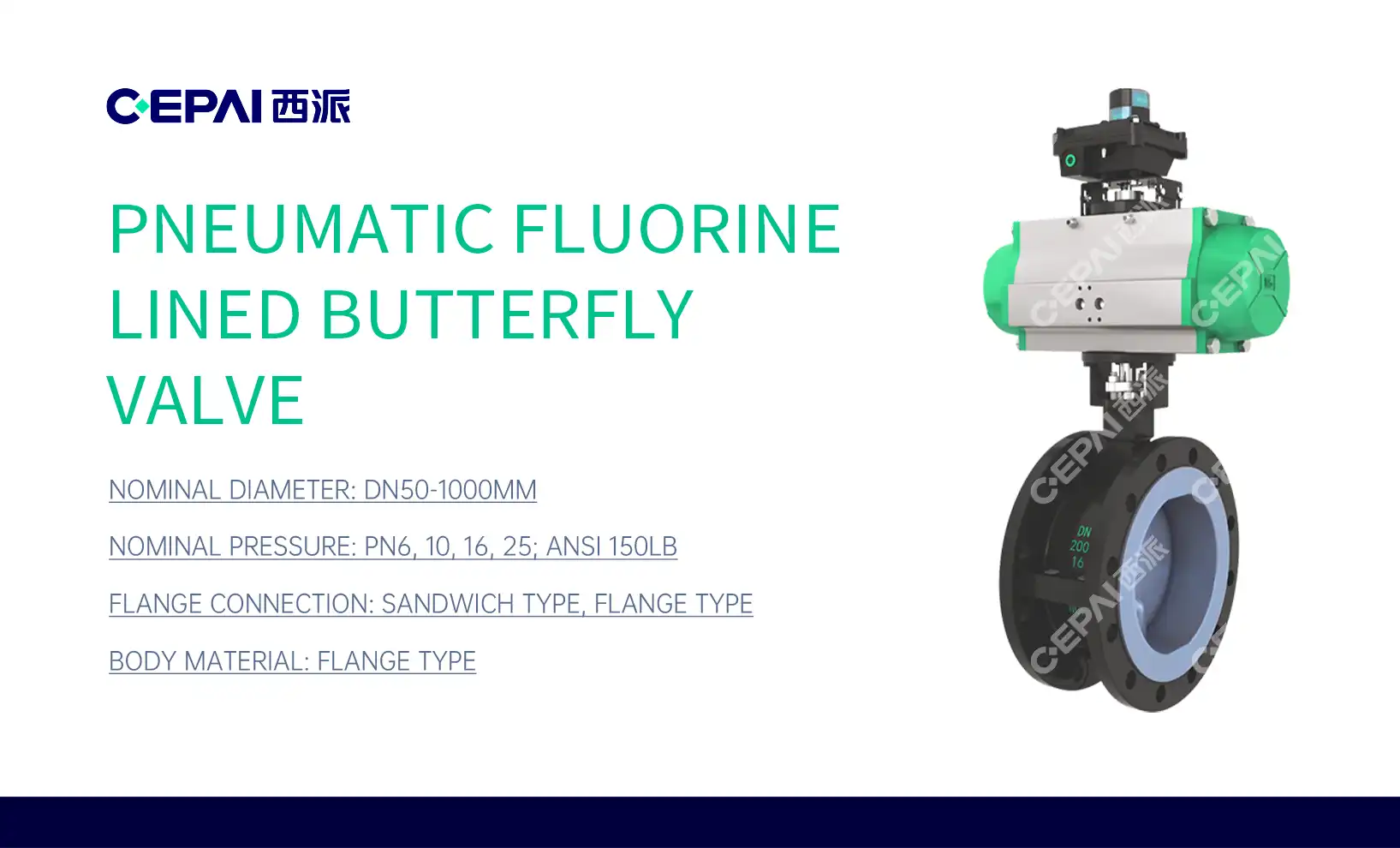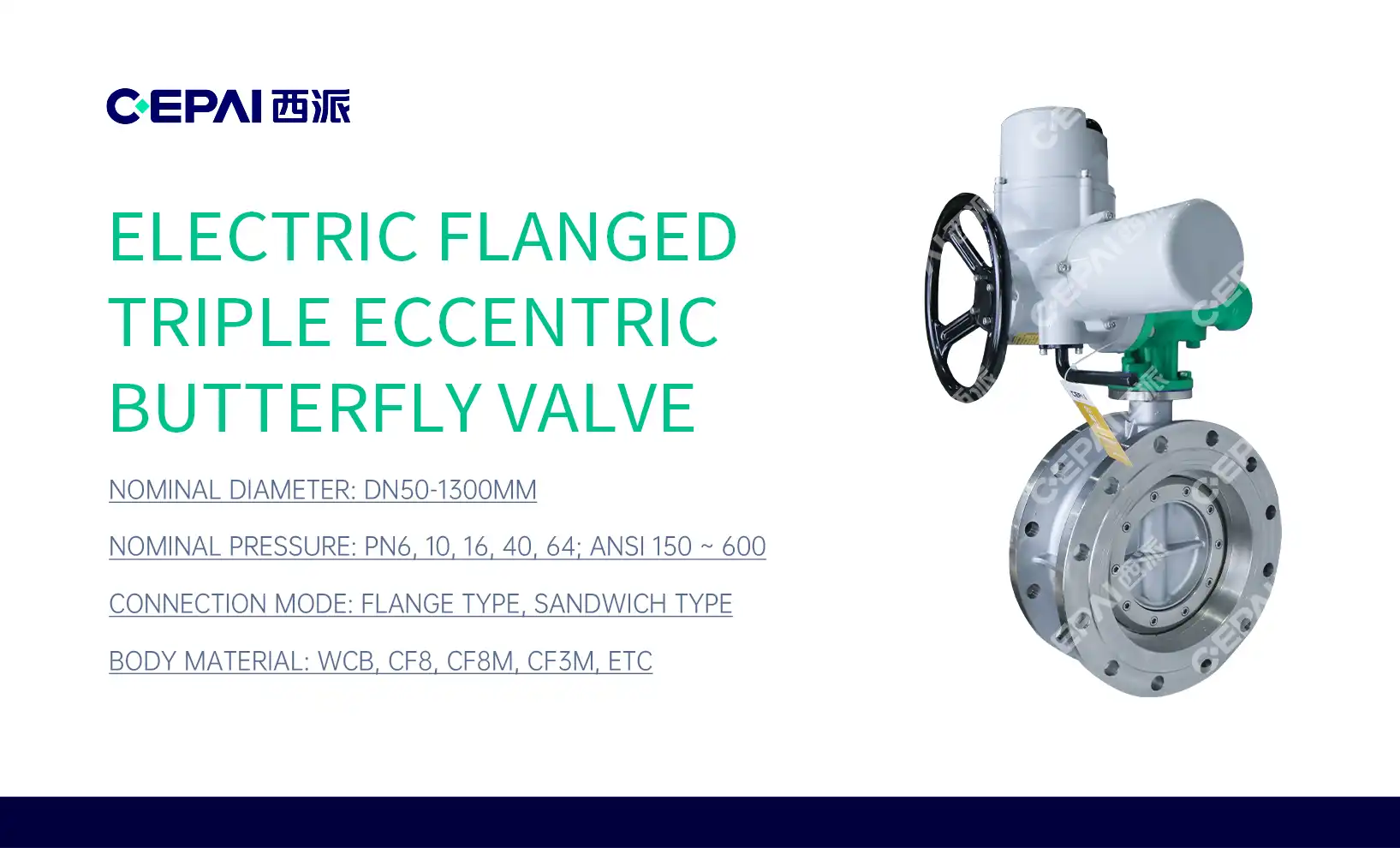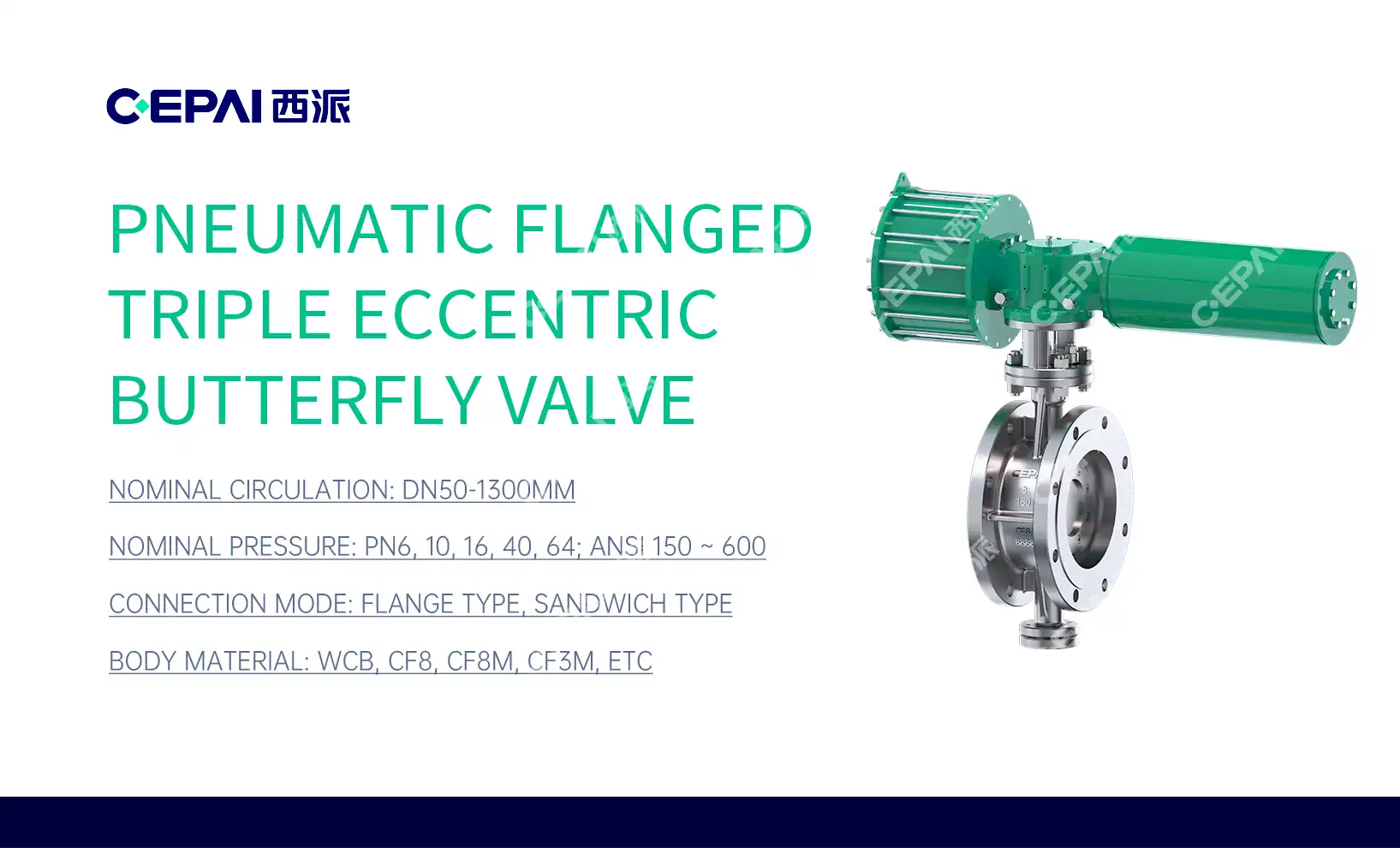Understanding Electric Butterfly Valves and Their Applications
What Are Electric Butterfly Valves?
Electric butterfly valves are widely recognized as efficient flow control devices used in diverse industrial applications. These valves feature a circular disc mounted on a rotating shaft, operated by an electric actuator to regulate the position of the disc within the pipeline. When the disc aligns parallel to the fluid flow, the valve is open, and when it turns perpendicular, the valve closes. The electric actuator enables precise positioning, allowing for accurate, automated, and remote-controlled regulation of liquids, gases, or air within complex systems.
Key Components of Electric Butterfly Valves
The construction of electric butterfly valves includes several essential components, each playing a key role in performance. The valve body forms the framework, providing durability and secure pipeline integration. The disc, commonly made from stainless steel, cast iron, or other robust materials, regulates flow by rotating inside the body. The seat, usually composed of resilient materials like PTFE or EPDM, creates a tight shutoff to prevent leakage. The stem transfers torque from the actuator to the disc, while the electric actuator, driven by a motor, ensures precise motion and reliable automation.
Industries and Applications
Due to their adaptability, electric butterfly valves are used in a wide range of industries. In oil and gas operations, they control the movement of crude oil, natural gas, and refined fuels with efficiency and reliability. Water treatment facilities depend on them for distribution, purification, and wastewater management processes. The chemical industry applies these valves for safe handling of corrosive or reactive substances. HVAC systems utilize them for regulating heating and cooling media such as air or water. Additionally, the food and beverage industry integrates electric butterfly valves for hygienic and consistent control during production, processing, and packaging.
Factors to Consider When Choosing an Electric Butterfly Valve
Valve Size and Flow Characteristics
Selecting the appropriate valve size is critical for optimal performance. The valve's size should match your pipeline diameter and desired flow rate. Undersized valves may restrict flow and cause pressure drops, while oversized valves can lead to poor control and unnecessary costs. Consider the valve's Cv (flow coefficient) value, which indicates its flow capacity. Additionally, examine the valve's flow characteristics curve to ensure it aligns with your process requirements. Some applications may benefit from equal percentage characteristics, while others might require linear or quick-opening characteristics.
Pressure and Temperature Ratings
Assess your system's operating pressure and temperature range to choose a valve that can withstand these conditions. Electric butterfly valves are available in various pressure classes, from low-pressure applications to high-pressure systems. Ensure the valve's pressure rating exceeds your maximum system pressure with an adequate safety margin. Similarly, verify that the valve's temperature rating accommodates both your normal operating temperatures and potential temperature spikes. Pay attention to the valve body and seat materials, as their temperature resistance can vary significantly.
Actuator Type and Control Options
The electric actuator is a crucial component that determines the valve's control capabilities. Consider factors such as torque output, duty cycle, and speed of operation when selecting an actuator. For precise control applications, opt for actuators with modulating capabilities. Evaluate the available control options, such as on-off, multi-position, or proportional control, to match your process requirements. Some advanced actuators offer features like position feedback, fail-safe functionality, and compatibility with various communication protocols (e.g., HART, Profibus, or Modbus). These features can enhance the valve's integration with your existing control systems and improve overall process efficiency.

Maintenance and Long-term Considerations for Electric Butterfly Valves
Routine Maintenance Practices
Implementing a proper maintenance routine is essential for ensuring the longevity and reliability of electric butterfly valves. Regular inspections should include checking for signs of wear, corrosion, or damage to the valve body, disc, and seat. Lubricate moving parts according to the manufacturer's recommendations to minimize friction and wear. Periodically test the valve's operation, including full open and close cycles, to verify smooth movement and proper sealing. Clean the valve internals as needed to prevent buildup of debris or process residues that could affect performance. Additionally, inspect and maintain the electric actuator, including checking electrical connections, motor condition, and gear mechanisms.
Troubleshooting Common Issues
Familiarize yourself with common issues that may arise with electric butterfly valves to facilitate quick problem-solving. Leakage is a frequent concern, often caused by worn or damaged seats, misalignment, or improper sealing. Addressing this may involve seat replacement or adjusting the valve's position. Erratic operation or failure to fully open or close can result from actuator problems, such as motor failure or control signal issues. In such cases, inspect the actuator's electrical components and control settings. Excessive noise or vibration during operation may indicate worn bearings, loose components, or improper sizing. Regular monitoring and prompt attention to these issues can prevent more significant problems and extend the valve's service life.
Lifecycle Cost Analysis
When selecting an electric butterfly valve, consider its total lifecycle cost rather than just the initial purchase price. Factor in long-term expenses such as energy consumption, maintenance requirements, and potential downtime for repairs. High-quality valves with robust construction and reliable actuators may have a higher upfront cost but can offer significant savings over time through reduced maintenance needs and improved efficiency. Evaluate the availability and cost of spare parts, as well as the manufacturer's support and warranty terms. Consider the valve's expected lifespan in your specific application and how it aligns with your facility's long-term plans. By conducting a comprehensive lifecycle cost analysis, you can make an informed decision that balances initial investment with long-term operational benefits.
Conclusion
Selecting the best electric butterfly valve for your industry requires a thorough understanding of your specific application needs and careful consideration of various factors. By evaluating valve size, pressure and temperature ratings, actuator type, and long-term maintenance considerations, you can make an informed decision that optimizes your process efficiency and reliability. Remember to consider the valve's lifecycle costs and choose a reputable manufacturer that offers quality products and reliable support. With the right electric butterfly valve, you can enhance your industrial operations and achieve better flow control in your systems.
FAQs
1. What are the main advantages of using electric butterfly valves?
Electric butterfly valves offer precise control, remote operation capabilities, and efficient flow regulation. They are suitable for a wide range of industries and applications, providing reliable performance and easy integration with automated systems.
2. How often should electric butterfly valves be maintained?
The maintenance frequency depends on the specific application and operating conditions. Generally, it's recommended to perform visual inspections and basic operational checks quarterly, with more comprehensive maintenance annually or as per the manufacturer's guidelines.
3. Can electric butterfly valves handle high-temperature applications?
Yes, certain electric butterfly valves are designed for high-temperature applications. When selecting a valve for such conditions, ensure that both the valve body and seat materials are rated for the expected temperature range, and consider special high-temperature actuators if necessary.
Choose CEPAI for Premium Electric Butterfly Valves
CEPAI Group Co., Ltd. is your trusted high-quality electric butterfly valves supplier and manufacturer. Our state-of-the-art intelligent manufacturing facility, featuring the longest high-precision flexible production line in the Asia Pacific region, ensures superior product quality and consistency. With our expertise in oil and gas equipment, we offer innovative solutions tailored to your industry needs. Experience the CEPAI difference in valve technology and reliability. Contact us at cepai@cepai.com to learn more about our premium electric butterfly valves and how we can optimize your industrial processes.

References
Smith, J. (2022). Advanced Flow Control: Electric Butterfly Valves in Modern Industries. Industrial Valve Quarterly, 45(3), 78-92.
Johnson, R., & Thompson, L. (2021). Selection Criteria for Electric Actuated Valves in Process Industries. Journal of Fluid Control Systems, 18(2), 112-129.
Chen, Y., et al. (2023). Comparative Analysis of Butterfly Valve Performance in High-Pressure Applications. International Journal of Valve Technology, 56(4), 201-218.
Williams, M. (2022). Maintenance Strategies for Long-Term Reliability of Industrial Valves. Plant Engineering and Maintenance, 33(1), 45-59.
Brown, A., & Davis, S. (2021). Energy Efficiency in Valve Selection: A Case Study on Electric Butterfly Valves. Energy Procedia, 87, 324-337.
Taylor, E. (2023). Innovations in Valve Seat Materials for Harsh Environmental Conditions. Materials Science and Engineering: A, 845, 143-157.

_1746598538016.webp)



